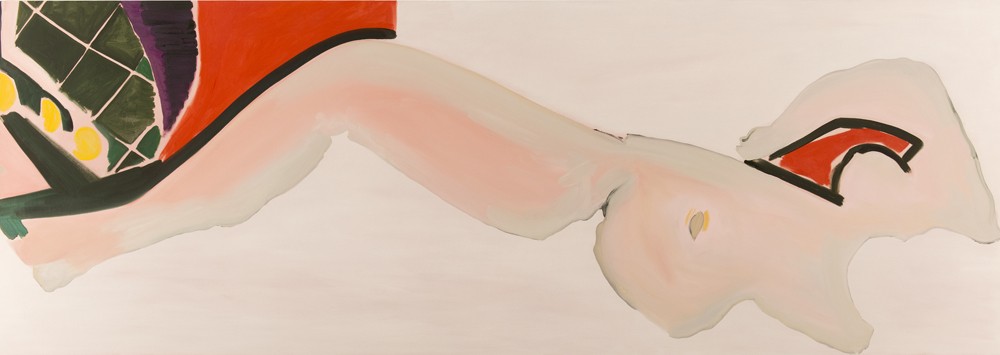Divided Pathways: Painting’s Choice
An Interview with Elizabeth McIntosh
In the following interview, Elizabeth McIntosh expresses her admiration for the ingenuity of Paul Klee. Her assessment is that “the quantity of his exploration made a lot of pretty weird paintings.”
She, too, is ingenious and has made some pretty weird paintings of her own. The Vancouver-based artist has a work from 2007 called Untitled (odd shapes with green borders) which looks exactly like its name, and another from the following year, Warm and Cold, in which the irregular lines and awkwardly placed rectangles on a bright yellow ground make you think that BC Binning took a trip on the Psychedelic Ferry. These are deliberate moves. McIntosh is a highly intelligent painter whose predisposition is to be on the lookout for new ways of using colour and form. “I never want to fully know what I am going to have at the end because then I wouldn’t need to make the painting.” She is especially interested in a wilfully induced pictorial alienation in which what she sees is what she hasn’t seen before.

Sit and Spin, 2014, oil on canvas, 24 x 20 inches. Courtesy the artist. Photograph: Scott Massey.
The other side of the perceptual coin is that like all serious painters, she is also heavily invested in the history of the medium. She has always looked to other painters for something that could play a catalytic role in her own practice, something as insignificant as a gesture, a colour or a line taken from a sticker book on modern artists. One example I had in mind in connection with McIntosh’s Warm and Cold was a painting by BC Binning called Device for Aesthetic Response, 1954. This is precisely the way she uses paintings by other artists; they are devices that provoke an aesthetic response.
More recently her looking has led her into the studios of a number of modernist giants, particularly Picasso and Matisse. She indicates a conscious engagement with their subjects, palette and sensuality. She is attracted to what she calls “the breadth of experimentation” in the period of high Modernism, a weight and range she has found wanting in the generations that followed.
McIntosh first referenced Picasso in Beginner’s Luck, 2011, and she picks him up again in Picasso’s Dream, 2012, and in Picasso Nude, 2014, although before she makes this painting her own she filters the Spaniard’s gaze through George Condo, with a pink wink at de Kooning.
But it is Matisse who more thoroughly occupies her painterly imagination. A painting like Girl, 2014, has the awkward delicacy of one of his Cambodian dancers and Big Lady, 2014, suggests an attenuated line that the French painter would admire. He would be equally approving of the unusual way that she fragments the composition. Her lady retains a fleshy languor, the full appreciation of which is impeded by the red shape outlined in black that sits uncomfortably where the woman’s armpit would be. Her anatomy is thoroughly skewed; the indentation under her breast assumes the character of a pubic cleft, and suddenly Matisse’s odalisque morphs into Duchamp’s Étant donnés. Ballsy, the title of an oil on canvas from 2013, sums up her process and her attitude; it both recognizes a painting with many tributaries as well as articulates an admirably abusive understanding of the uses of art history. In Conversation, 2013, McIntosh lifts some patterns and motifs from Matisse but her title more directly references The Conversation, a painting begun in 1908, finished four years later, and now in the collection of The State Hermitage Museum in St. Petersburg. The painting shows Matisse and his wife in morning dress on either side of a window that looks onto a garden with flower-covered ponds. In an earlier painting called From a Fauve Landscape, 2011, McIntosh’s marks and ground resemble Matisse’s garden. The conversation she is having with art, then, is a polyphonic one, as likely to talk through the fabric designs of Sonia Delaunay as the dreams of Picasso.

Big Lady, 2014, oil on canvas, 37.5 x 107 inches. Courtesy the artist. Photograph: Scott Massey.
Not surprisingly, McIntosh rejects any sense of regret in the notion of the road not taken. For her, painting offers a limitless number of possibilities. “There are so many routes you could take,” she says. “It is like a path that keeps dividing and each new path is a new canvas.”
This interview was conducted by phone to the artist’s home in Vancouver on June 23, 2014.
To read the entire interview with Elizabeth McIntosh, order Issue 131 or subscribe.

